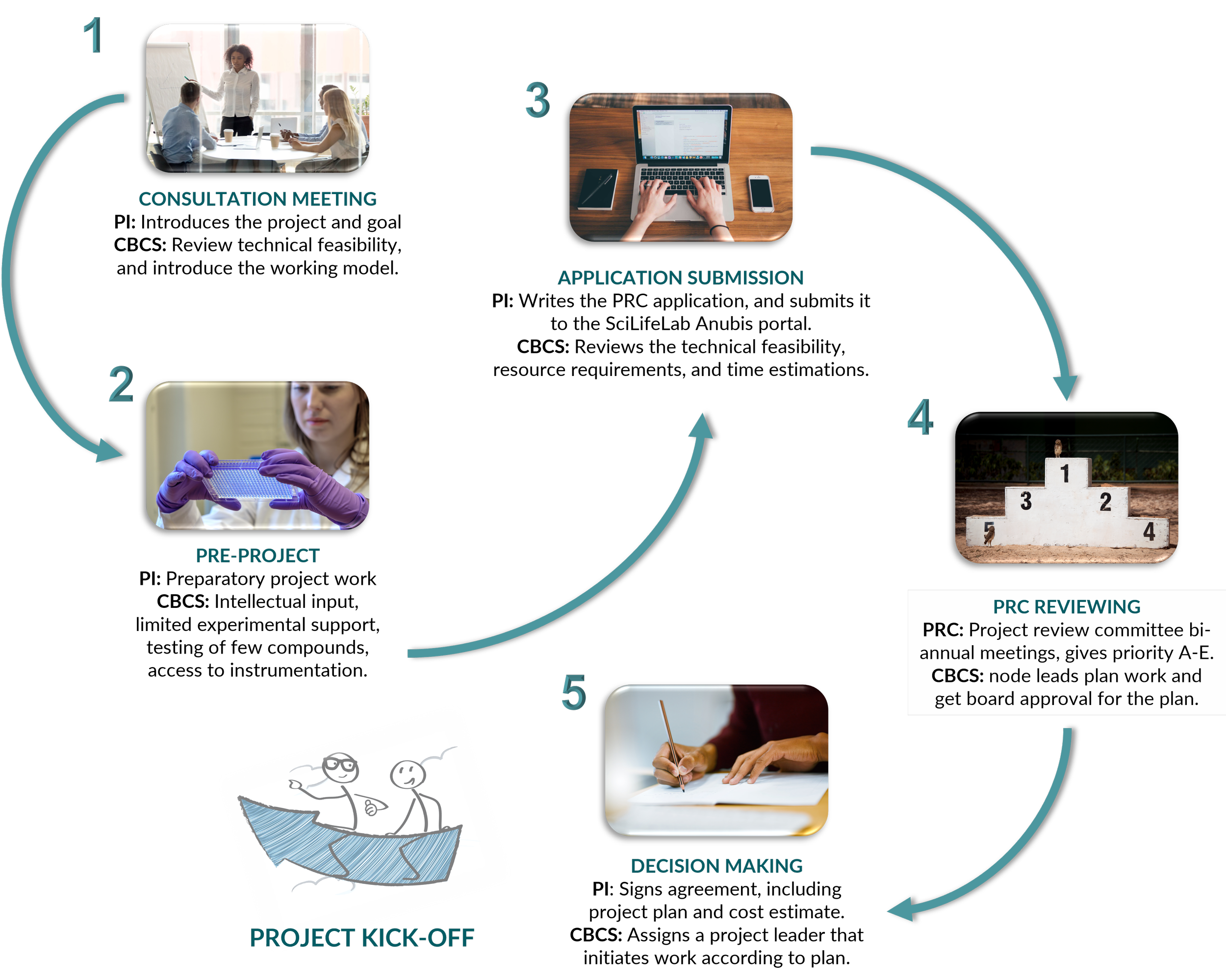It all starts with a conversation!
All collaborations with CBCS begin with an informal meeting—either online or in person at one of our facilities. This initial conversation is an opportunity to discuss your project's background, objectives, and explore how we can best support your research. From there, we’ll guide you through the appropriate next steps.
At CBCS, we operate under a collaborative research model built on mutual commitment between our team and the lead investigator. Our support spans a wide spectrum—from brief consultations and access to cutting-edge instrumentation, to complex, multi-year research projects.
Whether your needs are small-scale or highly ambitious, we're here to help. Smaller initiatives requiring minimal time and resources can often be accommodated quickly and without a formal application process.
View the CBCS accessibility document HERE (opens in a new window).
The CBCS Project Review Committee
For larger or more resource-intensive projects, CBCS employs a formal application and peer-review process to ensure that resources are allocated based on scientific merit and potential impact. Once your project has been introduced and discussed with our team, you may be invited to submit a formal Project Application to the CBCS Project Review Committee (PRC).
Established in 2011, the PRC is composed of independent experts in the field of chemical biology, including representatives from both academia and industry. The committee convenes twice a year to evaluate all project applications submitted during the preceding six months.
Each application is assessed using transparent evaluation criteria—scientific excellence, novelty, technical feasibility, and relevance are key factors. Projects that receive high scores are prioritized for support and assigned the appropriate CBCS resources. Lower-priority proposals may also be supported, depending on the availability of personnel and infrastructure.
Onboarding of larger projects through PRC
CBCS Cost Model
We understand that small molecule discovery can be a costly endeavor, and that academic funding is often limited—particularly when initiating new research directions. That’s why CBCS is committed to making collaboration as accessible and cost-effective as possible.
The financial model for CBCS collaborations varies depending on the scope and nature of the project. Whether the project is PRC-approved, small-scale, or full-cost, the majority of expenses related to personnel, infrastructure, instrumentation, and standard consumables are typically co-funded by CBCS within academic collaborations. All cost assessments are made transparently and in advance of project initiation.
Collaborators are generally responsible for covering the direct costs of project-specific reagents and any external studies that may be required. Ultimately, the most valuable contribution from our partners is their scientific expertise and the internal resources they bring to the collaboration.
Find the CBCS cost model HERE.
Industrial and International Collaborations
Astra Zeneca Open Innovation
Since 2017, CBCS has partnered with AstraZeneca Open Innovation program to facilitate academic access to AstraZeneca’s unique annotated small molecule compound library. This collaboration enables researchers to explore novel biology using high-value chemical tools that are otherwise not publicly available.
Projects under this initiative are typically centered on phenotypic assays, which offer strong translational potential and the ability to uncover new therapeutic mechanisms. The AstraZeneca library includes approximately 14,000 well-characterized compounds, each selectively targeting one or more of over 1,700 human proteins, providing a powerful resource for target discovery and validation.
EU OPENSCREEN
EU-OPENSCREEN is a European infrastructure that connects high-capacity chemical biology screening platforms across the continent, fostering collaborative research and shared access to cutting-edge resources.
In 2022, Sweden became the tenth member country to join this network, expanding EU-OPENSCREEN’s reach and capabilities. As part of this expansion, Chemical Biology Consortium Sweden (CBCS), including CBCS Umeå and CBCS KI, was selected as the official Swedish partner site—further strengthening Sweden’s role in the European chemical biology landscape.
Additional Partnerships
CBCS actively contributes to the broader research community through a range of strategic partnerships and networks.
We are a key partner in the Nordic Chemical Biology Network, including participation in specialized subnetworks such as the Nordic High-Content Screening Community, which fosters knowledge exchange and collaboration across the region.
In addition, CBCS is an associated partner of EUbOPEN, a major initiative funded by the Innovative Medicines Initiative (IMI). This ambitious European program focuses on generating open-access chemical probes and tools to advance drug discovery and target validation.



